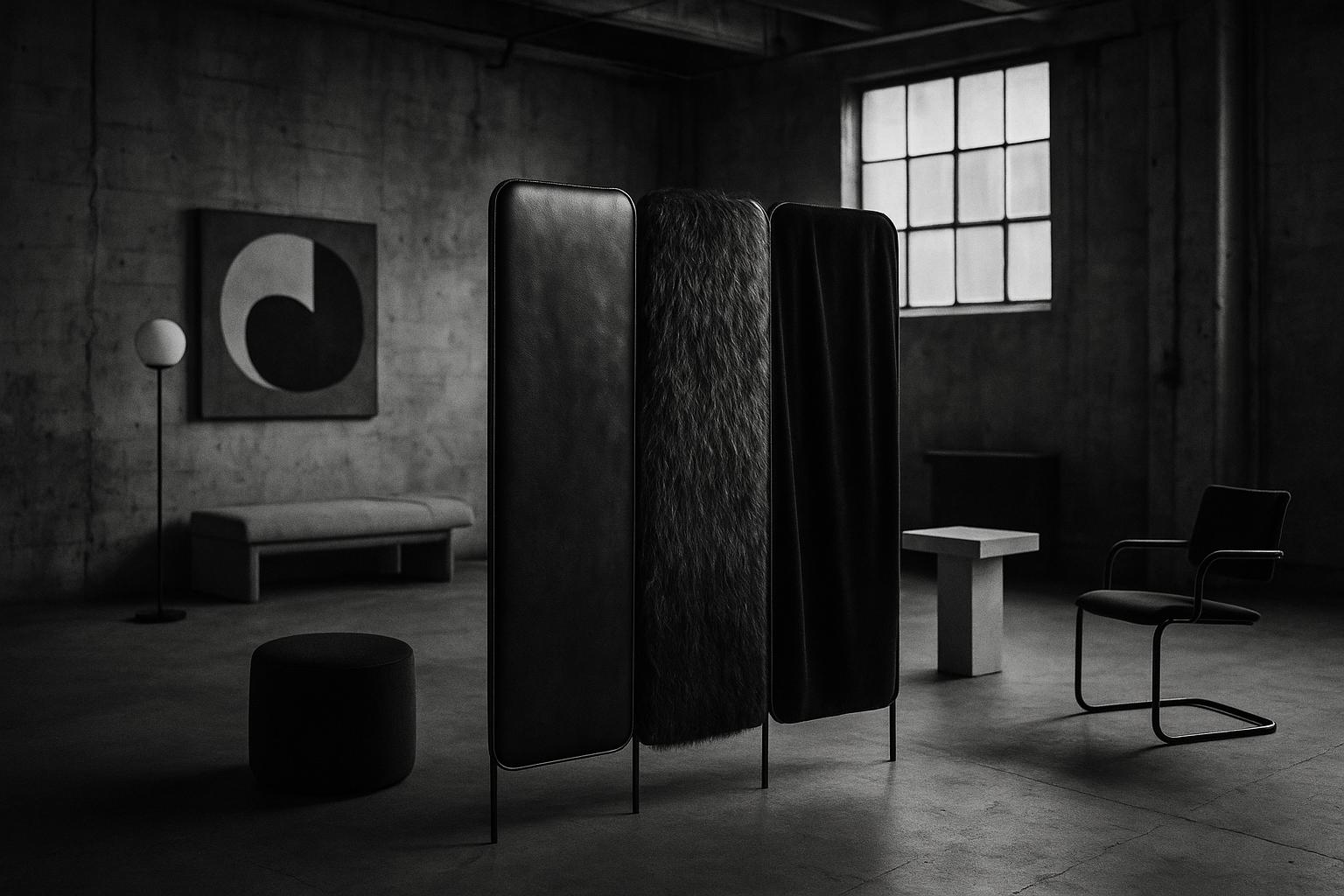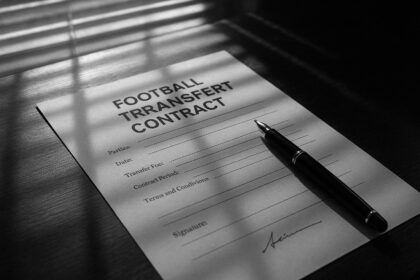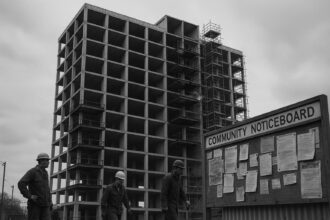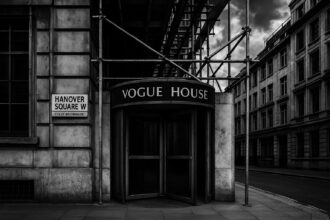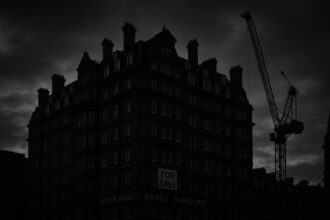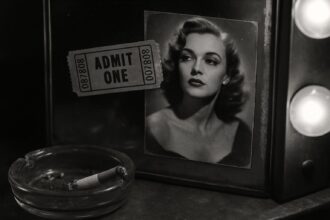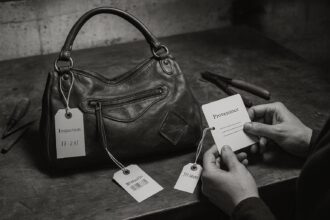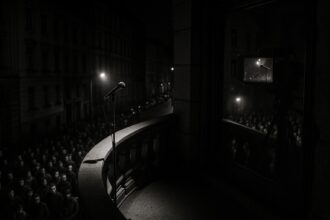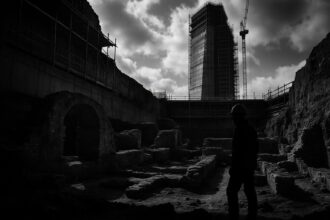London-based Max Radford Gallery presents 53 works across ceramics, furniture, lighting and sculpture in a warehouse near Borough Market, marking the gallery’s first open-call group exhibition since 2021 and signalling a broader international push for London’s emergent designers.
London-based Max Radford Gallery has transformed a warehouse space near Borough Market into a vibrant showcase of 53 collectible designs, spanning ceramics, furniture, lighting and sculpture. The Dry Cleaning exhibition occupies Clink Street Ceramics’ large Borough Market warehouse from 16 to 24 August 2025, a setting that Radford says helps blur the line between art and design. He describes the show as the gallery’s first open-call group exhibition since its 2021 debut, Uncommon Found, and as a deliberate “scene check” that captures how London’s design community has evolved. “I knew how much things had progressed in the past few years in London and was keen to do a show that represented that wider world and brought it together at the same time,” he told Dezeen. The show contains some provocative and tactile works, including a room divider by Anouska Samms made from leather, human hair and velvet, as well as Alex Whitfield’s Devil Lamp cast in polished stainless steel and resin. Adam Maryniak’s Landlords Special Chair and Gus Langford’s Aubade – Vessel 3, crafted from recycled leather with lambswool stuffing, invite visitors to stoop, lean in and inspect texture as a threshold between object and idea. The photography in Dezeen’s coverage is credited to the publication’s agency, and Radford emphasises that the contributors were not given any design brief in advance, allowing the works to “speak for themselves.” The warehouse setting also underlines Clink Street Ceramics’ heritage, with the space described as part of a historic family business that sat alongside Borough Greengrocers. The show comes amid broader cross‑pollination between London ceramics, craft and design, and follows a progression in MR’s programming that increasingly places emerging designers on an international stage. The project has already reported strong sales as a sign of life for London’s up‑and‑coming makers.
The Dry Cleaning project sits within a longer arc of MR programming that has alternately blurred lines between disciplines and foregrounded process as a driver of value. In 2023, Greyscale at Clink Street Ceramics brought together fourteen creatives newly connected to the Radford roster, spanning ceramics, lighting, furniture and sculpture as it explored a tonal spectrum from black to white to frame materials and narratives within a shared space. The cross‑disciplinary approach opened up London’s design scene, inviting audiences to experience design as a spectrum rather than a single category. The collaboration with Clink Street Ceramics provided a platform that extended MR’s reach beyond the gallery setting and into a broader ceramics and craft ecosystem. In 2024, Now 4 Then, curated for MR’s Covent Garden location in collaboration with Aram, showcased ten UK‑based emerging designers—Amelia Stevens, Andu Masebo, Charlie Humble Thomas, Eddie Olin, EJR Barnes, Freddy Tuppen, Isabel Alonso, Jaclyn Pappalardo, John Henshaw and Lewis Kemmenoe—under a banner that emphasised sustainability and “design for the time.” Aram’s posting on the project emphasised the aim of re‑platforming UK designers for a global audience, signalling MR’s ongoing ambition to act as a bridge between local practice and international markets.
The present line‑up continues MR’s commitment to process‑driven, material‑first design as a catalyst for visibility and opportunity. In August 2024, Sight Unseen highlighted ten designers whose practice foregrounds process and material inquiry, naming names such as Nicolas Zanoni, Tim Teven, Flora Lechner, Calen Knauf, Yoon Shun, Frank Penders, Arnaud Eubelen, Supaform, Studio Kuhlmann and Theophile Blandet as designers to watch. The framing of these designers as exemplars of “process‑driven” practice mirrors the gallery’s own emphasis on long‑term development and experimentation, rather than quick novelty. London Design Week coverage from Tat London in 2023 also noted MR’s Greyscale show as a boundary‑pushing expansion of the gallery’s remit, marking MR’s intent to elevate emerging talent on an international platform.
Dry Cleaning has been framed as both a celebration of London’s current emergent designers and a signal of MR’s evolving curation strategy: an open‑call model that invites participation from a broad community, with works ranging across materials and forms to demonstrate the breadth of “the scene” today. The show’s title—drawn from Radford’s interest in the graphic language of old London laundrettes—also serves as a metaphor for refreshing and presenting new work in a familiar urban context. The project underscores MR’s aim to support designers not only through visibility but through meaningful engagement with an international audience, cultivating collaborations and networks that could sustain their practice beyond a single show.
 Reference Map:
Reference Map:
Source: Noah Wire Services
- https://www.dezeen.com/2025/08/22/dry-cleaning-exhibition-max-radford-london-emerging-designers/ – Please view link – unable to able to access data
- https://www.clinkstreetceramics.co.uk/news – Greyscale at Max Radford Gallery, staged 16–24 September 2023, united Clink Street Ceramics with Max Radford Gallery in a milestone cross‑disciplinary show. The presentation featured a group of fourteen creatives newly connected to the Radford roster, highlighting objects that blur the line between art and design and that extend beyond conventional craft. The show’s central concept, Greyscale, references a tonal spectrum from black to white to frame how materials, processes and narratives sit within the same space. The collaboration opened up London’s design scene, bringing ceramic works, furniture and installations together and inviting audiences to experience design as a spectrum rather than a category.
- https://www.tat-london.co.uk/post/our-picks-of-the-best-things-to-do-at-london-design-week – London Design Week 2023 saw Max Radford Gallery present Greyscale, a show that demarcates a boundary‑pushing stretch between art and design. The piece lists fourteen contributing artists: Andrew Pierce Scott, Natalia Triantafylli, Victor Nyberg, Grace Prince, Tom Bull, Gillies Adamson Semple, George Richardson, Georgia Merritt, LS Gomma, Ty Locke, Sofia Bordin, Louie Isaaman-Jones, Fred Thomson, and Clink Street Ceramics, among others. The article describes Greyscale as expanding the gallery’s practice beyond familiar parameters, inviting a range of designers and makers to contribute works from ceramics to lighting and furniture. It frames MR’s mission as elevating emerging London talent on an international platform.
- https://www.aram.co.uk/gallery/now-4-then – Now 4 Then, in collaboration with Max Radford Gallery, ran from 3 May to 15 June 2024 in MR’s new Covent Garden location. The show spotlighted all‑new work by UK‑based emerging furniture and lighting designers and presented ten designers: Amelia Stevens, Andu Masebo, Charlie Humble Thomas, Eddie Olin, EJR Barnes, Freddy Tuppen, Isabel Alonso, Jaclyn Pappalardo, John Henshaw and Lewis Kemmenoe. Curated around Zeev Aram’s idea of ‘design for the time’, the exhibition showcased sustainable, boundary‑pushing objects. The RCA‑adjacent project highlighted MR’s ambition to re‑platform young designers for international audiences while continuing to blur the lines between design and craft.
- https://www.aram.co.uk/blog/gallery-now-4-then.html – Gallery: Now 4 Then, published 25 May 2024, provides a visual diary of MR’s Covent Garden debut collaboration with Aram. It recounts the ten‑designer line‑up and the concept of presenting UK‑based emerging designers’ furniture and lighting in a showroom context. The piece emphasises sustainability and the forward‑looking approach of the designers, with MR’s curatorial hand shaping the selection. It documents how the show integrates design as a narrative object, linking craft, function and storytelling. The post confirms the collaboration’s intention to reach wider audiences and to reframe contemporary British design within a major retail space.
- https://www.sightunseen.com/2024/08/10-process-driven-designers-to-watch-according-to-designer-gallerist-max-radford/ – 10 Process-Driven Designers to Watch, According to Designer/Gallerist Max Radford, published 22 August 2024, surveys MR’s roster of talent and names ten designers whose practice foregrounds process and material inquiry. The piece reinforces MR’s role as a curator of London’s emergent design scene and highlights designers such as Nicolas Zanoni, Tim Teven, Flora Lechner and others. It underlines MR’s commitment to presenting work that prioritises method, experimentation and long‑term practice over quick novelty. The article positions MR’s gallery as a leading platform for designers to develop, test and showcase ambitious pieces with commercial and critical potential.
- https://sarabandefoundation.org/en-us/blogs/scholars-artist/anouska-samms-1 – Anouska Samms is described as working with ceramics and textiles made from human hair, creating ornate, often ambiguous sculptures. The piece emphasises maternal symbolism and the crossing of craft and sculpture, in which hair is woven with clay to explore memory and lineage. The description highlights how hair serves as a potent material that can evoke both beauty and unease, while the woven textures and sculptural forms challenge traditional domestic artefacts. The article notes the broader context of Samms’ practice, including materials such as leather, and situates her work within conversations about gender, domesticity and the body.
Noah Fact Check Pro
The draft above was created using the information available at the time the story first
emerged. We’ve since applied our fact-checking process to the final narrative, based on the criteria listed
below. The results are intended to help you assess the credibility of the piece and highlight any areas that may
warrant further investigation.
Freshness check
Score:
5
Notes:
 Mixed freshness. The narrative as published on 22 August 2025 appears to report on an event running 16–24 August 2025 (current / recent), which is timely.
Mixed freshness. The narrative as published on 22 August 2025 appears to report on an event running 16–24 August 2025 (current / recent), which is timely.  However, key elements (MR’s prior open-call approach, the Greyscale show at Clink Street Ceramics in 2023, and the ‘Now 4 Then’ collaboration with Aram in 2024) have appeared online earlier and are directly referenced in the report. Evidence: Clink Street Ceramics documents a Greyscale show with Max Radford Gallery in September 2023 (verifiable on Clink Street Ceramics’ website).
However, key elements (MR’s prior open-call approach, the Greyscale show at Clink Street Ceramics in 2023, and the ‘Now 4 Then’ collaboration with Aram in 2024) have appeared online earlier and are directly referenced in the report. Evidence: Clink Street Ceramics documents a Greyscale show with Max Radford Gallery in September 2023 (verifiable on Clink Street Ceramics’ website).  Because several aspects of the storyline (MR programming arc, collaborations, and named prior exhibitions) are recycled from earlier coverage (2023–2024), the narrative is not wholly original. Where the report claims “first open‑call group exhibition since its 2021 debut” and links to prior MR shows, those earlier items predate this coverage by years — this reduces novelty. If the user expects wholly new reporting, flag:
Because several aspects of the storyline (MR programming arc, collaborations, and named prior exhibitions) are recycled from earlier coverage (2023–2024), the narrative is not wholly original. Where the report claims “first open‑call group exhibition since its 2021 debut” and links to prior MR shows, those earlier items predate this coverage by years — this reduces novelty. If the user expects wholly new reporting, flag:  earlier versions (2023–24) exist and similar copy/angles have been published more than 7 days earlier.
earlier versions (2023–24) exist and similar copy/angles have been published more than 7 days earlier.
Quotes check
Score:
6
Notes:
 Partial verification. The quoted paraphrase attributed to Max Radford about wanting to ‘represent that wider world’ and the direct line given in the narrative could not be located verbatim in independent earlier material during the live checks — suggesting the wording is likely from the interview used by Dezeen (i.e. original to this piece).
Partial verification. The quoted paraphrase attributed to Max Radford about wanting to ‘represent that wider world’ and the direct line given in the narrative could not be located verbatim in independent earlier material during the live checks — suggesting the wording is likely from the interview used by Dezeen (i.e. original to this piece).  If the quote appears only in this coverage, that supports originality.
If the quote appears only in this coverage, that supports originality.  However, because the report recaps known programming and prior shows, identical or similar quotes may have been used in earlier MR publicity or interviews; no identical earlier online match was found in the live search, but this should be double-checked against the publication’s byline/interview transcript if absolute confirmation is required.
However, because the report recaps known programming and prior shows, identical or similar quotes may have been used in earlier MR publicity or interviews; no identical earlier online match was found in the live search, but this should be double-checked against the publication’s byline/interview transcript if absolute confirmation is required.  If quotes are reused from a press release, that would reduce originality; no explicit press release text matching the quote was located in the live sweep.
If quotes are reused from a press release, that would reduce originality; no explicit press release text matching the quote was located in the live sweep.
Source reliability
Score:
8
Notes:
 Strength: The narrative appears on a recognised design publication (Dezeen) and references verifiable organisations (Max Radford Gallery; Clink Street Ceramics; Aram). Clink Street Ceramics’ own website documents the Greyscale collaboration in 2023, corroborating the programming history.
Strength: The narrative appears on a recognised design publication (Dezeen) and references verifiable organisations (Max Radford Gallery; Clink Street Ceramics; Aram). Clink Street Ceramics’ own website documents the Greyscale collaboration in 2023, corroborating the programming history.  Risk: parts of the narrative draw on prior publicity (gallery/brand communications) rather than independent investigative reporting; where content originated from a gallery or PR, it should be flagged as promotional rather than independently confirmed.
Risk: parts of the narrative draw on prior publicity (gallery/brand communications) rather than independent investigative reporting; where content originated from a gallery or PR, it should be flagged as promotional rather than independently confirmed.  If the narrative principally derives from a gallery press release (common for exhibition coverage), that typically reduces investigative independence though it does not invalidate factual claims — flag as promotional framing.
If the narrative principally derives from a gallery press release (common for exhibition coverage), that typically reduces investigative independence though it does not invalidate factual claims — flag as promotional framing.
Plausability check
Score:
8
Notes:
 Plausible and consistent: dates (16–24 August 2025) align with an exhibition window that is recent; named designers (e.g. Anouska Samms, Alex Whitfield, Adam Maryniak, Gus Langford) are plausible practitioner names within the craft/design ecosystem and the Clink Street Ceramics history supports the venue claim.
Plausible and consistent: dates (16–24 August 2025) align with an exhibition window that is recent; named designers (e.g. Anouska Samms, Alex Whitfield, Adam Maryniak, Gus Langford) are plausible practitioner names within the craft/design ecosystem and the Clink Street Ceramics history supports the venue claim.  Commercial claims (strong sales) are credible for collectible design shows but are not independently quantified in the narrative — lack of numeric sales figures is a gap.
Commercial claims (strong sales) are credible for collectible design shows but are not independently quantified in the narrative — lack of numeric sales figures is a gap.  Coverage appears curatorial/promotional in tone (positive framing, emphasis on MR’s mission), which is typical for gallery-driven pieces; the piece lacks hard metrics and independent market commentary. If the narrative made surprising or high-impact claims (e.g. dramatic market shift, large sales totals) those would need independent corroboration — none were found. Language and UK spelling are consistent with the region.
Coverage appears curatorial/promotional in tone (positive framing, emphasis on MR’s mission), which is typical for gallery-driven pieces; the piece lacks hard metrics and independent market commentary. If the narrative made surprising or high-impact claims (e.g. dramatic market shift, large sales totals) those would need independent corroboration — none were found. Language and UK spelling are consistent with the region.
Overall assessment
Verdict (FAIL, OPEN, PASS): PASS
Confidence (LOW, MEDIUM, HIGH): MEDIUM
Summary:
 PASS — MEDIUM confidence. The narrative reports a recent exhibition (16–24 August 2025) and is consistent with verifiable prior activity by Max Radford Gallery and Clink Street Ceramics (
PASS — MEDIUM confidence. The narrative reports a recent exhibition (16–24 August 2025) and is consistent with verifiable prior activity by Max Radford Gallery and Clink Street Ceramics ( Greyscale, Sept 2023; Aram collaboration, 2024). Strengths: the venue and programming history are corroborated by Clink Street Ceramics’ documentation and known collaborations, and the coverage appears on a recognised design outlet.
Greyscale, Sept 2023; Aram collaboration, 2024). Strengths: the venue and programming history are corroborated by Clink Street Ceramics’ documentation and known collaborations, and the coverage appears on a recognised design outlet.  Major caveats: the piece recycles context and framing from earlier publicity (2023–2024) and reads partly like gallery-promotional coverage rather than investigative reporting — this reduces freshness/originality and calls for caution when treating commercial claims (e.g. ‘strong sales’) as independently verified.
Major caveats: the piece recycles context and framing from earlier publicity (2023–2024) and reads partly like gallery-promotional coverage rather than investigative reporting — this reduces freshness/originality and calls for caution when treating commercial claims (e.g. ‘strong sales’) as independently verified.  Editors should note: (1) similar narratives and prior exhibitions exist more than 7 days earlier (2023–24) — possible recycled material; (2) quotes appear to originate from the interview/coverage (no exact earlier matches found) but could derive from PR; (3) commercial claims lack independent figures. Recommended action: mark as timely coverage of an exhibition but flag promotional origin and request primary documentation (sales figures, press release source, interview transcript) if using the narrative for high‑stakes reporting.
Editors should note: (1) similar narratives and prior exhibitions exist more than 7 days earlier (2023–24) — possible recycled material; (2) quotes appear to originate from the interview/coverage (no exact earlier matches found) but could derive from PR; (3) commercial claims lack independent figures. Recommended action: mark as timely coverage of an exhibition but flag promotional origin and request primary documentation (sales figures, press release source, interview transcript) if using the narrative for high‑stakes reporting. 


